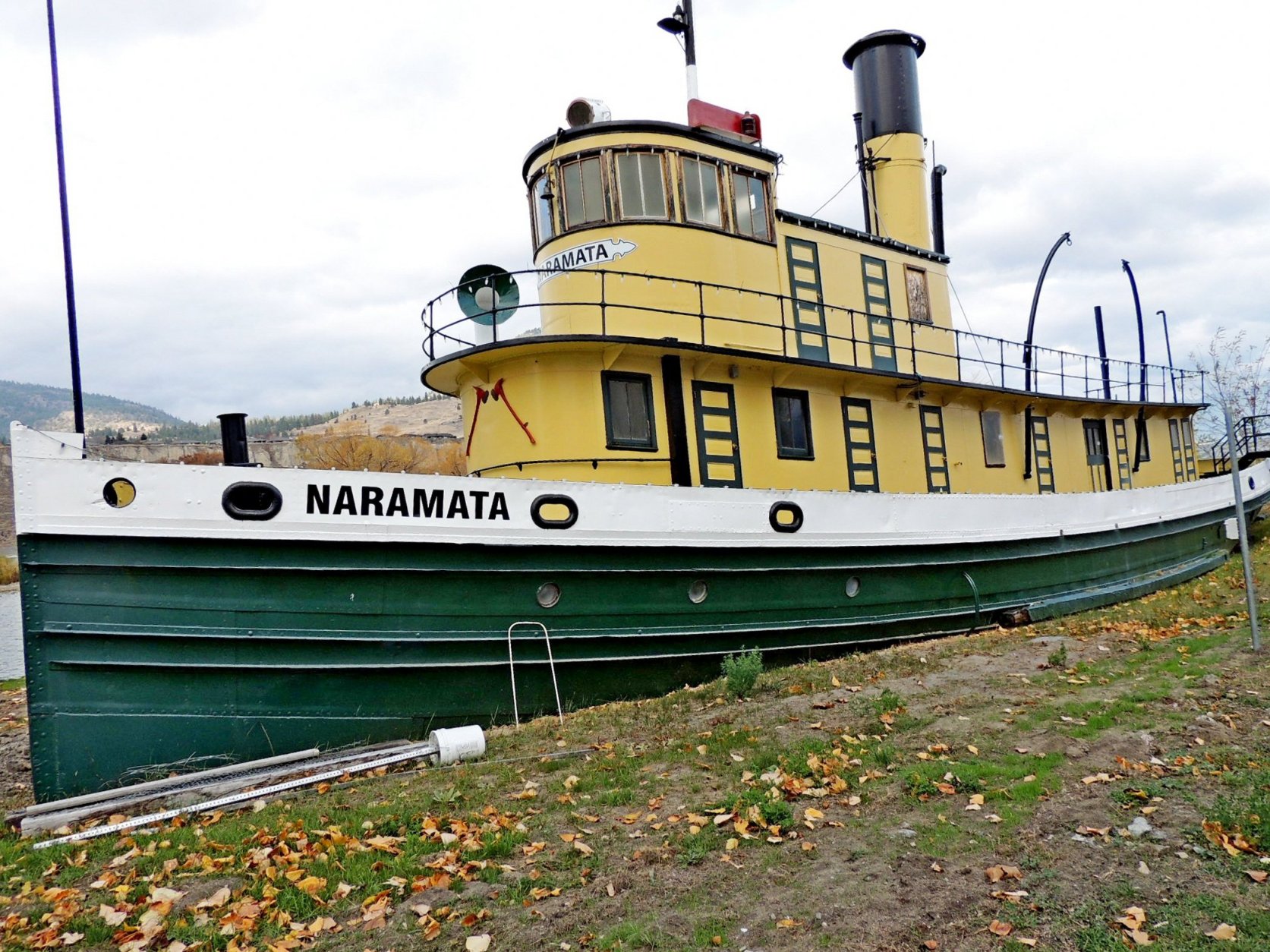SS Naramata
The S.S. Naramata was named after the prosperous fruit-growing community north of Penticton. Her main purpose was the transportation of fruit from the numerous packing houses along Okanagan Lake to the railway at Okanagan Landing, and later Kelowna.
The S.S. Naramata was similarly constructed to the S.S. Sicamous, with a prefabricated hull and boat works that were built in Port Arthur Ontario and shipped to Okanagan Landing for assembly.
The hull was painted green, with the rest of the ship a buff yellow. The hull provided sleeping quarters for the crew, bunkers for coal, as well as the boiler room and engine room. The galley with a small mess for the crew was in the first floor deckhouse. The pilot house was elevated to provide a good view of the lake and was close to the cabins for the captain and first officer.
Work began in the September of 1913, with as many as 150 men employed in its construction. The ship is over ninety feet long, weighs 150 tons, and has 150 horsepower. The total cost of the vessel came to nearly $40,000. The Naramata had a regular crew of a captain, first officer, two deckhands, a chief engineer, second engineer, two firemen, one bargeman, a cook and a pilot during the busy fruit season.
The tug was launched April 20th, 1914, into the Canadian Pacific Railway Lakes and River service to be the year-round tug. While she had a passenger capacity of 20, she was rarely used outside of barge service. The tug would start at 2:30 in the morning from Naramata, and get to Okanagan Landing around noon. The ship was capable of hauling two fully loaded steel barges moving the equivalent of a 16-20 car train. Moving fruit from the packing houses along the lake to the railway at Okanagan landing was the main purpose of the tug. Speed was integral to the service in handling the highly valuable and perishable fresh fruits, especially in the heat of an Okanagan summer. Fruit was often shipped at night, to avoid transit during the heat of the day. At the height of the season there would be around five to seven carloads of fruit. A carload was 840 boxes of apples, and each box was 40lbs. (18kg.) Early wooden barges were capable of carrying eight freight cars and the steel barges, in the later years of the service could carry ten cars.
During winters when the lake froze over, the S.S. Naramata would push through the ice to make a channel for the passenger steamers, including the S.S. Sicamous.
The S.S. Naramata was unglamorous, but essential to the lives of the orchardists in the Okanagan. The ten or so major lake shipping points of the lake contributed to about 20,000 tons of freight with gross earnings averaging around $600,000 during the late 1940’s and early 1950’s.
August 29th, 1967 was the final time the ship was used. With the tug and barge service in decline, the CPR decommissioned the Naramata. It was then sold privately until being transferred and placed under the protection of the S.S. Sicamous Restoration Society in 1991. Now resting beside the S.S. Sicamous, the Naramata looks right at home.
A cleanup began that included the removal of pigeon droppings and debris. After inspection, the steel hull was found to be paper thin in places and leaking. Repair work was far beyond the resources available and the tug was pulled onto the beach and back-filled with sand; made possible by a special fund from the Provincial Heritage Trust. The hull is presently protected by a cathodic protection system to help prevent further deterioration of the steel hull. This is not a long term solution however. With new funding from the Provincial Government, we can begin the process of repairing the hull, and making her “lake-worthy” once more.


